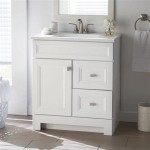Adding a Bathroom on a Second Floor
Adding a second-floor bathroom is a popular home renovation project that significantly increases property value and enhances daily living. However, undertaking this project requires careful planning and consideration of several critical factors, including plumbing, structural support, and local building codes.
Key Considerations for Second-Floor Bathroom Addition
Several key considerations must be addressed before commencing a second-floor bathroom addition:
*Structural Integrity: A bathroom adds considerable weight to a home's structure. Assessing the existing floor joists and framing is crucial to ensure they can support the added weight of the new bathroom fixtures, plumbing, and tiling. Consulting a structural engineer is highly recommended to determine if reinforcement is necessary.
*Plumbing: Integrating new plumbing into an existing second-floor space presents specific challenges. The most efficient approach often involves tying into existing plumbing lines, preferably located directly below the planned bathroom. If this isn't feasible, rerouting plumbing can be more complex and costly.
*Ventilation: Proper ventilation is essential to prevent moisture buildup, which can lead to mold and mildew. A bathroom exhaust fan vented to the exterior is mandatory. The size and capacity of the fan should be appropriate for the bathroom's square footage.
*Building Codes and Permits: All bathroom additions must comply with local building codes and require permits. These codes dictate specific requirements for plumbing, electrical work, ventilation, and structural elements. Before starting any work, obtaining the necessary permits is essential.
Plumbing Considerations and Options
Plumbing is a critical component of any bathroom addition. Understanding the available options is vital for making informed decisions.
*Tying into Existing Plumbing: The ideal scenario is to position the new bathroom directly above or near an existing bathroom or kitchen. This proximity simplifies the plumbing process by allowing connection to existing drain lines and water supply pipes.
*Up-and-Over Plumbing: If tying into existing plumbing isn't feasible, an "up-and-over" approach can be used. This involves running new drain lines up and over floor joists to connect to an existing stack. This method can be more complex and expensive but offers flexibility in bathroom placement.
*Macerating Systems: For situations where traditional plumbing is challenging, a macerating system can be a viable solution. This system grinds waste into a slurry and pumps it vertically or horizontally to connect with existing plumbing lines. This option is particularly useful for basement or attic bathroom additions or where significant distance from existing plumbing necessitates it.
*Vent Stacks: All plumbing fixtures require proper venting to ensure correct drainage and prevent sewer gases from entering the home. Adding a bathroom may require extending or modifying existing vent stacks to accommodate the new fixtures.
Electrical and Lighting Requirements
Adequate electrical service and appropriate lighting are essential for a functional and safe bathroom.
*Dedicated Circuit: Bathroom circuits typically require a dedicated 20-amp GFCI (Ground Fault Circuit Interrupter) protected circuit to handle the electrical load of appliances like hair dryers and electric shavers, as well as to enhance safety in a wet environment.
*Lighting Fixtures: Careful consideration should be given to bathroom lighting. A combination of ambient, task, and accent lighting creates a functional and aesthetically pleasing space. Properly placed lighting around the vanity mirror is crucial for grooming.
*Exhaust Fan Wiring: The exhaust fan should be wired to its own dedicated switch, independent of the lighting controls.
Space Planning and Layout
Optimizing the available space is paramount for a functional and comfortable bathroom.
*Layout Considerations: Careful planning of the layout is essential. Consider the placement of the toilet, sink, shower/tub, and vanity to ensure efficient use of space and comfortable movement within the bathroom.
*Fixture Selection: Choosing appropriate fixtures significantly impacts both functionality and aesthetics. Consider space-saving fixtures like corner sinks or compact toilets for smaller bathrooms. The size and style of the shower or bathtub should also align with the overall bathroom design and available space.
*Storage Solutions: Incorporate adequate storage solutions to keep the bathroom organized and clutter-free. This can include vanities with built-in drawers and cabinets, shelving units, and recessed medicine cabinets.
Flooring and Wall Finishes
Selecting appropriate flooring and wall finishes are crucial for both aesthetics and practicality in a bathroom environment.
*Waterproofing: Proper waterproofing is paramount in a bathroom to prevent water damage to the subfloor and surrounding areas. This involves using a waterproof membrane under the flooring and behind wall finishes in the shower/tub area.
*Flooring Options: Suitable flooring materials for bathrooms include ceramic tile, porcelain tile, vinyl flooring, and engineered hardwood designed for wet areas. These materials offer water resistance and durability.
*Wall Finishes: Popular wall finishes for bathrooms include ceramic or porcelain tiles, moisture-resistant paint, and wall panels designed for wet environments. These materials provide water resistance and ease of cleaning.
Cost and Budget
Developing a realistic budget is essential for any bathroom addition project.
*Factors Affecting Cost: Several factors influence the overall cost, including the size of the bathroom, the complexity of the plumbing and electrical work, the quality of fixtures and finishes selected, and labor costs.
*Contingency Planning: It is prudent to include a contingency fund in the budget to account for unforeseen expenses that may arise during the project.
Timeline and Project Management
A well-defined timeline and effective project management are crucial for a successful bathroom addition.
*Project Phases: Breaking the project down into distinct phases, such as demolition, plumbing, electrical, framing, finishing, and fixture installation, allows for better organization and tracking of progress.
*Contractor Selection: If hiring a contractor, selecting a reputable and experienced professional is crucial. Obtain multiple bids and check references before making a decision.

Adding Bathroom On Second Floor Dwv Design Plumbing Add A Installation

How Difficult Is It To Install A Second Floor Bathroom Nc Plumbing Services Raleigh Plumber Kitchen

Model Remodel Design Build On Instagram Adding A Second Story Bathroom To Home With Sloped Small Attic Skylight Basement Renovations

Bathrooms With Sloped Ceilings Fine Homebuilding
How To Plumb A Basement Bathroom Diy Family Handyman

How Much Does It Cost To Add A Bathroom 2024 Data

Adding A 2nd Floor Bathroom Upstairs With Toilet And Shower Installed Cpt Builders

Basement Bathroom Plumbing Planning For A Below Grade Lavatory

Adding A Bathroom Upstairs Houzz

Plumbing For A Second Floor Bathroom Repairs
Related Posts







